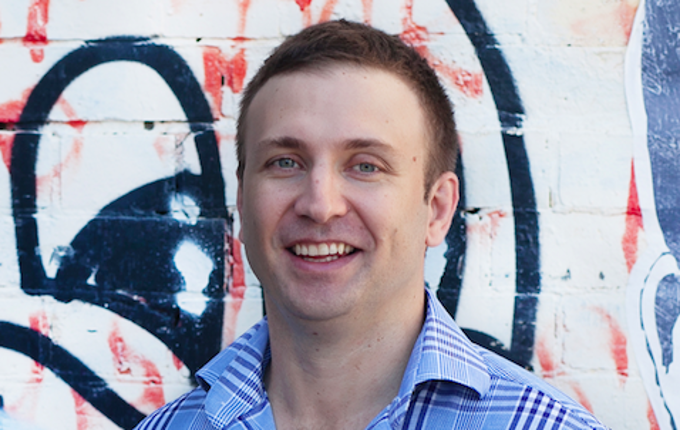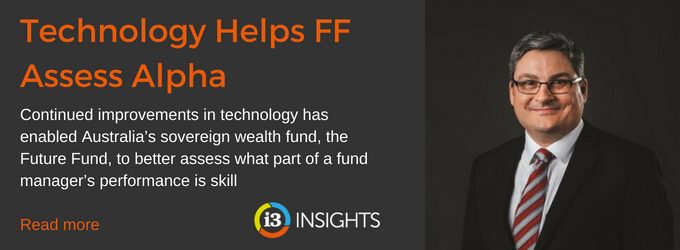As more institutional investors move towards a whole-of-portfolio approach, they run into a problem: most of the technology platforms they use to keep track of their assets have not been built with that approach in mind.
Instead, most systems available today were initially designed to compare the performance of a single asset class against a set benchmark, which makes it difficult to combine all of the knowledge embedded in these systems into a single view.
But as both investors and regulators are realising scenario testing is a better way to assess risks in the portfolio than using historical data, switching to a whole-of-fund view becomes even more important.
Tony Mackenzie was working at Queensland-based investment house QIC when he realised technology had not kept up with this shift in focus of asset managers.
Mackenzie was Chief Strategist, responsible for asset allocation, portfolio construction and research in the multi-asset team, and found it was difficult to get a real-time sense of what was happening in the portfolio.

With the cloud you can really make things available in a way they weren’t available before, connect things that weren’t connected before and deliver it to end users in a way that wasn’t able to be delivered before
“The technology had been built to solve different problems than we face in managing funds today,” he says in an interview with [i3] Insights.
“If you go back 10 years ago, there was a much greater focus on how the individual asset classes outperformed their benchmark. It was an issue of: ‘Where are you taking risk versus a particular index?’
“The equity team was looking at the equity portfolio and their benchmark, while the fixed income team looked at their portfolio and index. But I think the focus has changed to be more outcomes based and more goals based from a top-down lens.
“That doesn’t necessarily align with some of those older ways of looking at the problem, because when you are looking from the top down, you don’t necessarily care as much whether a particular part of the portfolio has a tracking error versus the index.
“You start to think about what sort of factor exposure do I have across my portfolio, how am I positioned to achieve the objectives of the fund into the future. And so they are slightly different problems.”
This realisation led Mackenzie to quit his secure job and opt for the uncertain existence of a technology start-up entrepreneur.
In 2014, he and his family left Brisbane for San Francisco to be closer to the technology heartland of Silicon Valley, and Mackenzie established Jacobi.
Now, four years later he supplies asset management solutions to some of the largest institutional investors in Australia.
The Cloud
For Mackenzie, the biggest game changer in technology has not been artificial intelligence or machine learning, but the migration of systems to the cloud.
“The ability to offer software in the cloud is changing the way it can be delivered to clients. They can have the latest versions all the time. They can have services at home; more and more of the workforce is moving to flexible working arrangements, while the ability to function in a business continuity event is also of paramount importance,” he says.
“That was really tricky in the old world where everything happened on servers onsite.”
But the cloud has also been instrumental in solving the dreaded compatibility issues people faced in trying to get different systems to talk to each other.
“In these open architecture systems, one system can talk to the other,” Mackenzie says.
“In the world of the multi-asset manager, you might have a fantastic system for equity risk at the security level and then feed that information into another system, which might provide a top-down view of the portfolio.
“Five to 10 years ago, to integrate the systems was a big challenge, but now with the focus on APIs (application programming interfaces), you solve the security and integration issues.
“With the cloud you can really make things available in a way they weren’t available before, connect things that weren’t connected before and deliver it to end users in a way that wasn’t able to be delivered before.
“For me, I think that is probably a more important element at this stage of managing portfolios than machine learning or artificial intelligence. Don’t get me wrong, I think these are very important and will become more important for many funds.
“But right now funds are still working out the best way to store their data, to structure their data and for those technologies to have the maximum benefit you need a lot of data.”
Knowledge Management
More funds are realising the potential of combining all available data within the organisation in a way that gives them a near real-time view of the state of affairs. But structuring all this data remains a challenge and one that isn’t always given the attention it deserves, Mackenzie says.
“Many of the funds have very strong investment teams; they have invested very heavily in the human capital of these businesses. But they don’t necessarily have the knowledge management and data management to be able to leverage all of that human capital,” he says.
“Something happens overnight, perhaps President Trump does something outlandish, and markets move. The job of the chief investment officer is to come to work the next day and see how that has impacted the portfolio.
“How does it impact the positioning of the portfolio? Has it impacted our views on future returns and has that impacted the outcome for client objectives? Can they easily translate all of the investment smarts of the team into their forward-looking views?
“In the past, to answer these questions could take weeks, sometimes involved an investment committee review, perhaps they needed to wait for an asset consultant to advise them, and I think these technologies have more of the data all in one place, so you can start to say: ‘I can get access to the portfolio in real time and take action the day after an event has occurred,’ or at least much faster than having to wait for a broader asset allocation review.”
Scenario testing
Combining all the knowledge an organisation might have into one comprehensive framework on a near real-time basis would make it much easier to do proper scenario testing and plan for bumps in the road ahead.
“In a lot of the old systems there was more of a historic focus on asset classes, while many of the questions the CIO and investment team have today are about what will happen in the future,” Mackenzie says.
“What we are seeing is that teams want to have more flexible ways to translate their views into real potential scenarios and test the portfolio into the future.”

In the old systems there was more of a historic focus on asset classes, while many of the questions the CIO and investment team have today are about what will happen in the future
This doesn’t mean funds have to reinvent the wheel, because much of the information required for a forward-looking framework is already present in their existing investment processes.
“A fund wouldn’t have invested in an asset if they hadn’t done an assessment of how that asset may perform under different scenarios,” Mackenzie says.
“They have done due diligence on the asset, they will have an understanding of what drives the cash flow, what will make it perform poorly or well and what correlation it has to equity markets.
“They have these views, so to have the ability to translate these views into different scenarios – perhaps the impact of a shock rise in interest rates on the portfolio – is extremely important.”
__________
[i3] Insights is the official educational bulletin of the Investment Innovation Institute [i3]. It covers major trends and innovations in institutional investing, providing independent and thought-provoking content about pension funds, insurance companies and sovereign wealth funds across the globe.


